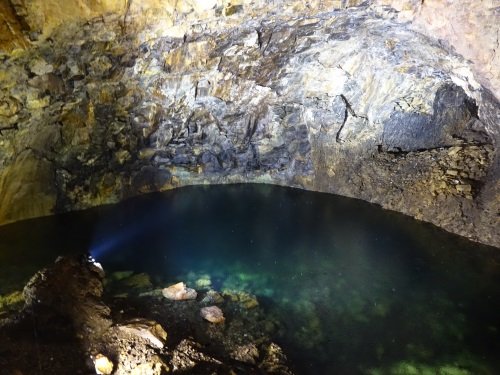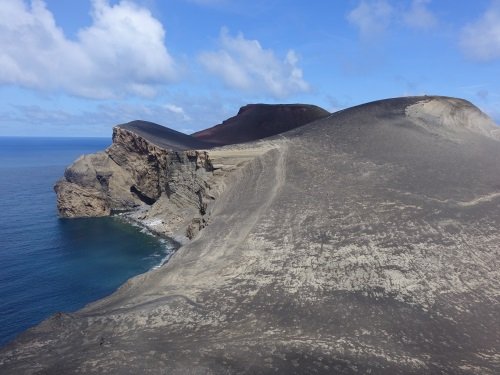Els Slots
Mid-Atlantic Ridge
The Mid-Atlantic Ridge (MAR) has been part of the Tentative list of Portugal since this year. At this geographical location three tectonic plates have been moving away from each other and the void has been filled by magma from the inner earth. The MAR actually extends from the Antarctic to the Arctic, but this possible future nomination only comprises the Portuguese Azores section. It replaces the earlier single tentative sites Algar do Carvão and Furna do Enxofre, and now seems to incorporate all inhabited and uninhabited islands plus the terrestrial waters of the Plateau of the Azores.

It is not difficult to see or experience geological features of the MAR during a visit to the Azores. My stay at the three islands of Terceira, Pico and Faial provided numerous up-and-close views of results of volcanic events that took place here. One of the main tourist attractions of the island of Terceira for example is Algar do Carvão, a “volcanic chimney”. While I found tourism very low-key in general on the Azores and local costs only a fraction of those of the mainland, entrance to Algar do Carvão costs 10 EUR. For that sum you’ll have to descend a long flight of stairs, until the bottom of the volcano where there is a lake created by rainwater and stalactites/stalagmites on the walls. I did not find it very spectacular.
On the island of Faial the site of Capelinhos can be visited. The landscape here is the result of a submarine volcanic eruption that took place in 1957. It resulted in a bit of additional land for Faial island, and the coverage of part of the lighthouse and dwellings of local whalers under lava. The eruption was actually of a similar kind to the one that created Surtsey in Iceland 6 years later, but – the TWHS description concludes surly – volcanologists coined the term “surtseyan” instead of “capeliniana”. No trace of that legend is mentioned in the Surtsey AB evaluation by the way.

Another feature typical of the Azores is connected to the MAR as well: the occurrence of high numbers of “migratory pelagic megafauna” (i.e.: whales). They seem to be attracted to the feeding opportunities at the chains of seamounts. Every respectable town on the islands has its whale & dolphin watching outfitter, taking tourists out to open sea in small boats for a couple of hours. I did such a trip from Madalena on Pico island.
Almost 10 years ago I had been on a similar trip from Peninsula Valdes in Argentina. The conclusion of both trips turned out the the same: it’s very hard to get good views of the whales, as they are submerged under water for most of the time. During this trip from Madalena the captain of the boat was quite good at predicting which side of the boat the beasts would pop up to breathe. But I still did not succeed in taking any good pictures. The dolphins proved to be more cooperative.

As the MAR is a truly global phenomenon, we even already have a Connection about it featuring 4 WHS. It is weird that Portugal goes it alone in pursuing a nomination, although talks have been going on since 2007 about an international serial nomination. Iceland seems to be the obvious choice for a MAR nomination, this was even suggested at the evaluation of Surtsey.
More on
Els SlotsComments
No comments yet.
